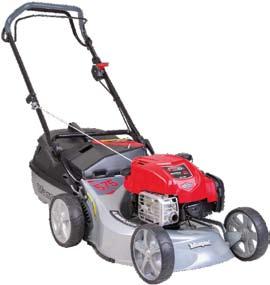
2 minute read
Time to tiptoe through the tulips
When I think of tulips, my head is filled with images of swathes of colour, filling the beautiful Dutch countryside.
Like many of us I assumed that tulips are native to Holland because of the immense amounts that are grown there and exported across the world every year. However, they originated in Asia and were sent to Holland in the 16th century.
Advertisement
Tulips are a part of the lily family, the petals are edible and can be used as an onion substitute. It is said that red tulips represent true love; apparently tulips are the second most popular Valentine’s Day flower. White ones are a symbol of apology and forgiveness, while purple tulips are a symbol of royalty. There are more than 3,000 varieties of tulips that bloom from March to May.
For best results plant in well-drained soil, in a sunny spot from mid to late autumn. Plant at least three times the depth of the bulb, pointed end up and a minimum of 5cm apart. For the best displays, plant fresh bulbs each autumn. They make a great show in containers and can be layered to give a continuous display until early summer. You can also combine tulips with other spring bulbs for a more long-lasting display.
Tulips can be kept in the soil all year round, but you will find that they will become shorter and have smaller flowers than previous years. To prevent this, it’s important to ensure as much goodness returns to the bulbs as possible. Deadhead them after flowering; if you allow them to go to seed it will waste much needed energy for next year.
Some gardeners prefer to lift and store tulip bulbs rather than leaving them in the ground. Once the foliage has turned yellow, a month after flowering, lift them with a hand fork. Remove the foliage and pull or cut off the stem and remove the flaky outer coating from the bulb. Leave the bulbs to dry and then store in a paper bag, ready for next autumn.
Jobs to keep you busy throughout March
Cut dogwoods - cornus to the base to promote vigorous growth ready for next winter’s colour
Lift and divide overgrown perennials for free plants
Finish pruning roses
Watch out for slugs around your plants’ new tender growth
If the lawn shows signs of growth, mow but make sure the blades are at the highest setting
Plant shallots, onion sets and early potatoes
Prepare a trench for your beans, fill with your kitchen scraps over the next couple of months, loosely covering with cardboard until full. It’s a great way to feed your beans and compost your peelings
Plant summer flowering bulbs such as lilies, freesia, alliums and gladioli. Top dress containers with fresh compost
The beds are starting to be filled with glorious colours, a great reward for all that hard work.
By Suzi M, plotter





